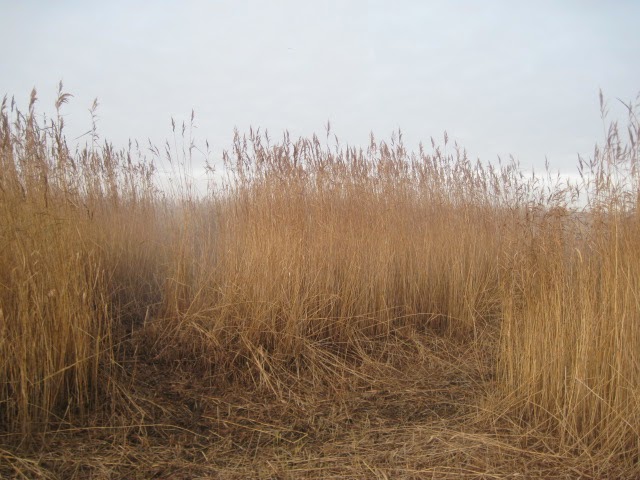 |
| When I first arrived, there was little water on the lagoons, creating great conditions for wading birds such as Ruff, Curlew Sandpiper and Redshank to feed on the small invertebrates living in the mud |
 |
| Stray/injured/lost birds are often brought into the RSPB, and this young Gannet, named 'Captain Beaky', was no exception. He came down in strong winds and was too weak to fly off, and was brought to us. So we cared for and fed him until he was strong enough to be released at the seaside. |
 |
| A view of one of the pools maintained for breeding Bitterns to fish in. We spent a great deal of time creating 'Blue zone', an edge habitat between the pool and the reedbed where insects congregate and provide food sources for reedbed birds and fish. |
 |
| Cleaning out and repairing the 70+ nest boxes that are maintained over winter each year for the large population of Tree Sparrows to nest in come spring. Tree Sparrows are similar to the more common House Sparrow, but don't like human company as much and tend to nest away from people. |
 |
| Typical view out in the reedbed when cutting the plots of reed. We cut over 5 hectares (5 football pitches) of reed over the winter to create a mosaic of different habitats across the reedbed, creating better conditions and more insects for Bearded Tits to feed and breed. After a week or so of cutting, it became a bit of a maze out in the reeds, and I managed to get lost more than once! |
 |
| The massive tidal surge on 5th December resulted in a rather muddy, sticky reserve, with rubbish, reed litter, and mud covering everything. The clean-up operation took about 3 weeks, but we managed to re-open after Christmas. |
 |
| The paths and hides (see next photo) got totally covered in mud and silt, which we had to scrape off with massive snow scrapers, shovels, and stiff yard brushes. We scraped off a layer of stone and spent some time drying out and scrubbing hide floors, but we got it to a decent condition in the end! |
 |
| The good thing about the tidal surge though, is that it brought a lot of water onto the reserve, filling up the lagoons and re-wetting the reedbed and the grazing marsh, helping to create good conditions for the breeding season and attracting in a lot more ducks and geese! |
 | ||
The mud and silt on the paths also allowed animal tracks to be seen more clearly, including those of weasels, badgers, foxes, deer and birds of all shapes and sizes
|
 | ||
Things were back to normal after Christmas, and we spent some time cutting up some of the coppiced wood from last year and stacking it up for use as firewood! The driftwood that was washed up came in handy too!
|
 |
| As well as spending time at Blacktoft Sands, I also visited the RSPB reserve at Fairburn Ings, where I saw a lovely range of ducks, geese, woodland birds, and even a few Kingfishers! Well worth a visit. |
 |
| A view of sunset over one of the lakes at Fairburn Ings. |
 |
| In addition to all of the practical work, I also helped out with people engagement, including writing out information boards to go along the nature trails to the hides! Of course, the picture isn't by me - far too good to be my work! |
 |
| So here is the result of the new Softrak reed cutter/bundler - giant bales of reed! The plan is to use these reed bales to create little logs of reed which can be burnt on a fire as part of the biofuels project mentioned in my earlier post.
So there you go! A brief round-up of some of the habitat and site management things that I got involved with whilst volunteering up at Blacktoft Sands over the winter. I really enjoyed my time working on this site, especially as it's so different to what I've done previously! But at the end of March I'm heading up north once again, this time to Perth (the one in Scotland, not Australisa!) to survey a wide variety of bird species across Perthshire! I won't be based at a reserve this time, I'll be moving about all over the place, surveying wherever the birds are! I'll have my own flat and I'll be given a car to use to get around, plus I'll be getting paid! Hooray! So wish me luck for the season ahead!
|





